Many of our past blog posts have focused on Black history in the realm of academia and formal education. But visions of antiquity are not always created in formal classrooms – popular media more often create or reinforce popular notions of what antiquity looked like. This post focuses on Black classicisms, specifically, two recent music videos: MONTERO (Call Me By Your Name) by Lil Nas X, and Rumors by Lizzo, featuring Cardi B. Both works are clear receptions of well-known (and in some cases, slightly-less-well-known) imagery from ancient Greece and Rome. In receiving the ancient world, these artists take part in a long tradition of Black classicisms: artistic receptions of the “classical” Greek and Roman past, which, broadly speaking, challenge white supremacist notions of who ‘owns’ classical antiquity and what the framework of classicism can mean.
While the MONTERO music video (directed by Ukranian director Tanu Muino) is littered with classical imagery, the most prominent reference is the Greek quote from Plato’s Symposium (191a) inscribed on the Tree of Life: ἐπειδὴ οὖν ἡ φύσις δίχα ἐτμήθη, ποθοῦν ἕκαστον τὸ ἥμισυ τὸ αὑτοῦ (“when the nature was cut in two, each desired their other half”). In an SCS blogpost, Vanessa Stovall and Kiran Pizarro Mansukhani argue that the kiss Lil Nas shares with the snake, also played by himself, represents the longed-for Platonic reunification. Of course, since the snake is male, it also represents a recognition and acceptance of his sexual identity. In addition to its role as part of a queer reception, the Symposium passage also evokes the dual themes of masculinity and femininity.
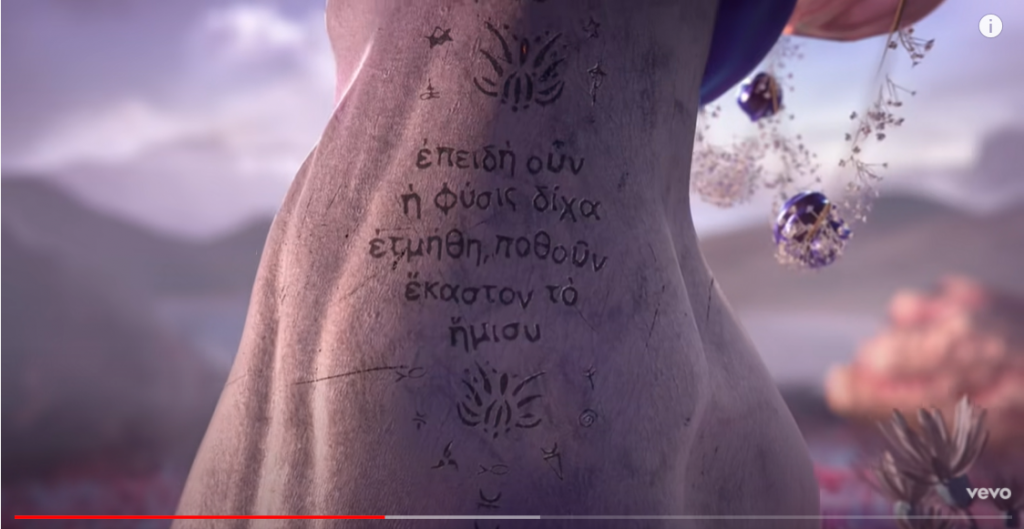
Throughout the music video, Lil Nas subverts normative gender roles. As a result, his consummation with the snake also represents a recognition and acceptance of masculinity that does not reject femininity. In doing so, Lil Nas self-consciously participates in a long tradition of other Black men, like Prince and Jimi Hendrix, who similarly undercut traditional white ideas of masculinity (see Steven Fullwood on this here and Lil Nas’ homages to both Prince and Jimi Hendrix). By using classical and biblical references to perform his experience as a gay, Black man, Lil Nas denies its common use of crafting a narrative of heteronormativity and masculinity.
The music video for Rumors, also directed by Tanu Muino, likewise imagines ancient Greek art full of Black people. From the moment that Lizzo appears, a goddess within a Greek vase-painting, we are presented with a world of Black Greek art. Wall paintings and vase paintings feature Black people; even sculptures, which have so often been literally white-washed to evoke the universal and eternal state of white beauty standards, are gilded rather than white, and their bodies are fat, rather than skinny and visibly muscular, an aesthetic often tied or discussed as indicative of classical (and therefore ‘real’) beauty (see, for instance, this BBC article on the prevailing influence of classical sculpture on beauty standards).
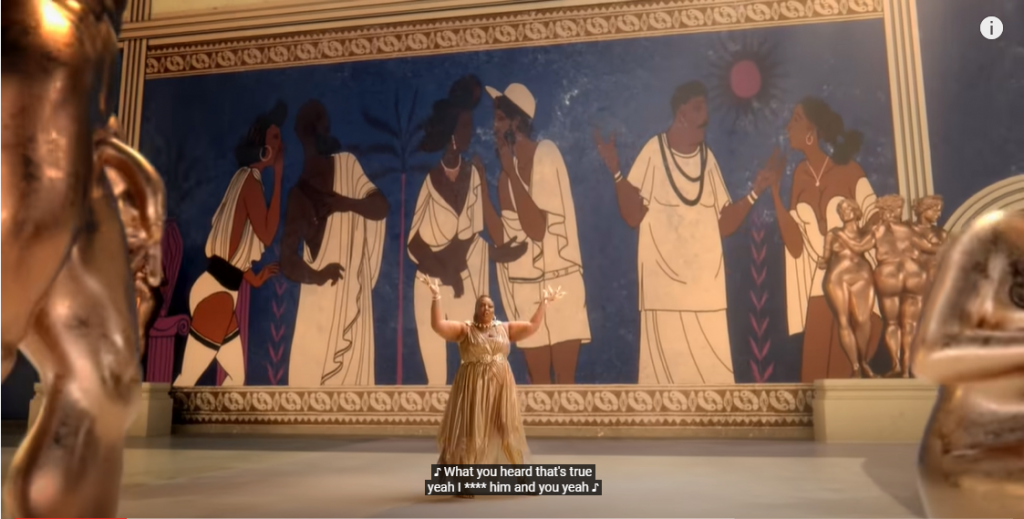
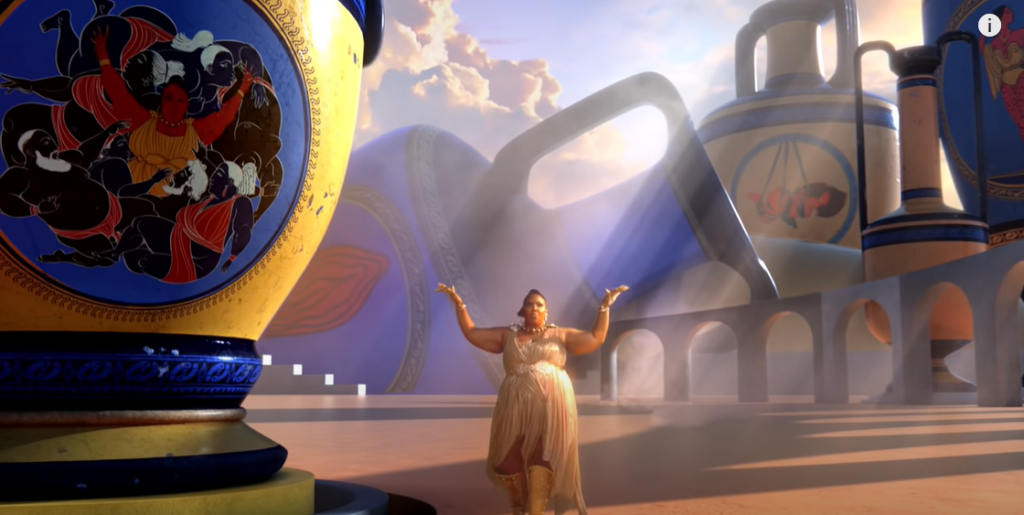
By inserting fat bodies as idealized bodies, letting the thin statues appear as rumor-spreading haters, Lizzo replaces this norm which is taken for granted across the English-speaking world. In her talk alongside Maciej Paprocki at AIMS 2022, Aimee Hinds Scott discussed the Rumors video, arguing that the music video re-envisions Disney’s Hercules (1997) as a Black reception that disrupts the male gaze through particular association with Thalia and focus on body positivity. Lizzo and her dancers become muses perched atop Ionic columns (see below, screencap 1:09), with power over the rumors that dominate press and online discussions about them.
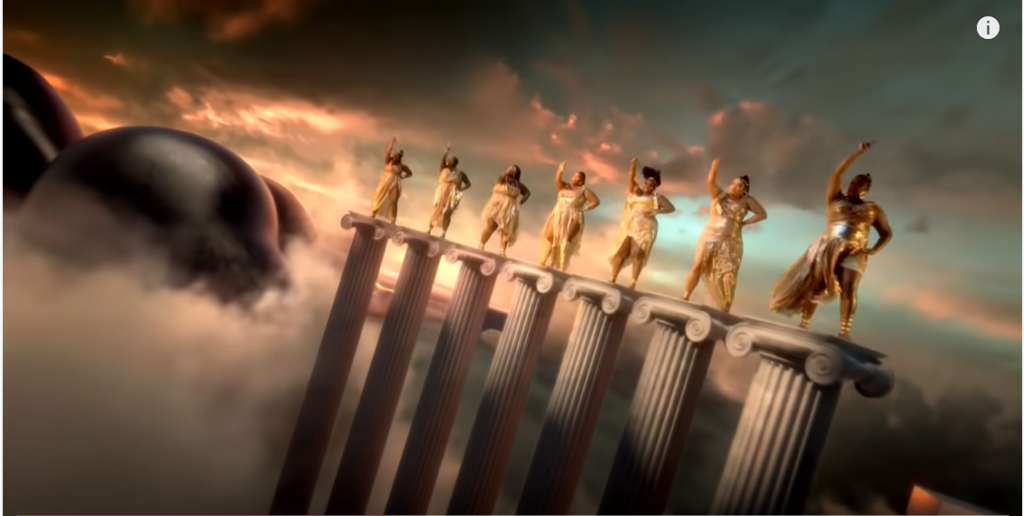
Like Lil Nas X, Cardi B and Lizzo also challenge dominant (white-centric) puritanical views of bodies, not only by centering fat people, mostly Black women, but also with their attitudes towards sex. While Lil Nas X gives the devil a lap dance before taking the crown of hell itself, Lizzo and her muses twerk atop columns and Cardi B shows her visibly pregnant body (evocative especially of Beyonce’s appearance at the 2017 Grammys while visibly pregnant) while sitting atop a prominently phallic chair surrounded by flying phalluses, also known as fascina/i.

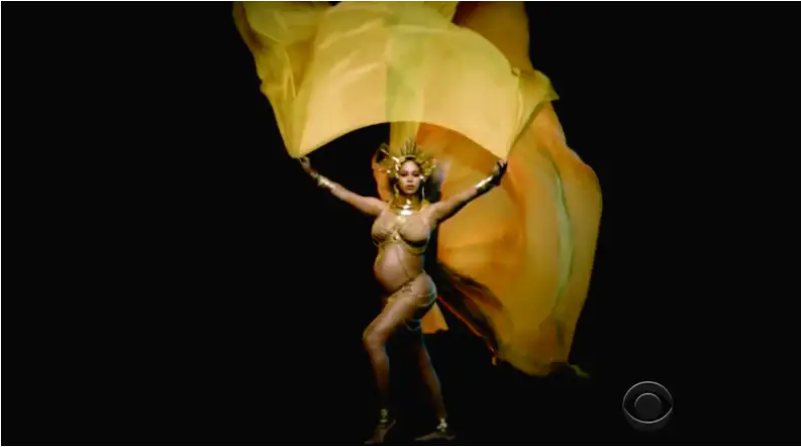
As Cardi and Lizzo take ownership of rumors about them and as Lil Nas X proudly assumes his new devilish (perhaps more fairly, anti-church/anti-Christian) position of power, they respond to longstanding white supremacist discourses which hypersexualize Black men and women. They are sexual on their own terms – haters be damned.
In the United States especially, Black folks have long been intentionally excluded from learning about Greek and Roman classical antiquity, as we have mentioned in earlier blog posts. Nonetheless, Black artists have used and continue to use references to ancient Greek and Roman culture to resist and/or redefine racist discourses and, as we see in these videos, positively construct Black identity through the use of classical materials.
post by Mary Somerville and Devin Lawson
Here are some other Black classicisms worth checking out:
-Romare Bearden’s A Black Odyssey, a series of collages and watercolors based on Homer’s Odyssey
–Harmonia Rosales‘ new exhibition, “Entwined” (see review by Dr Sarah Bond)
-Vanessa Stovall’s Twitter thread about the Odyssey and Get Out (2017)